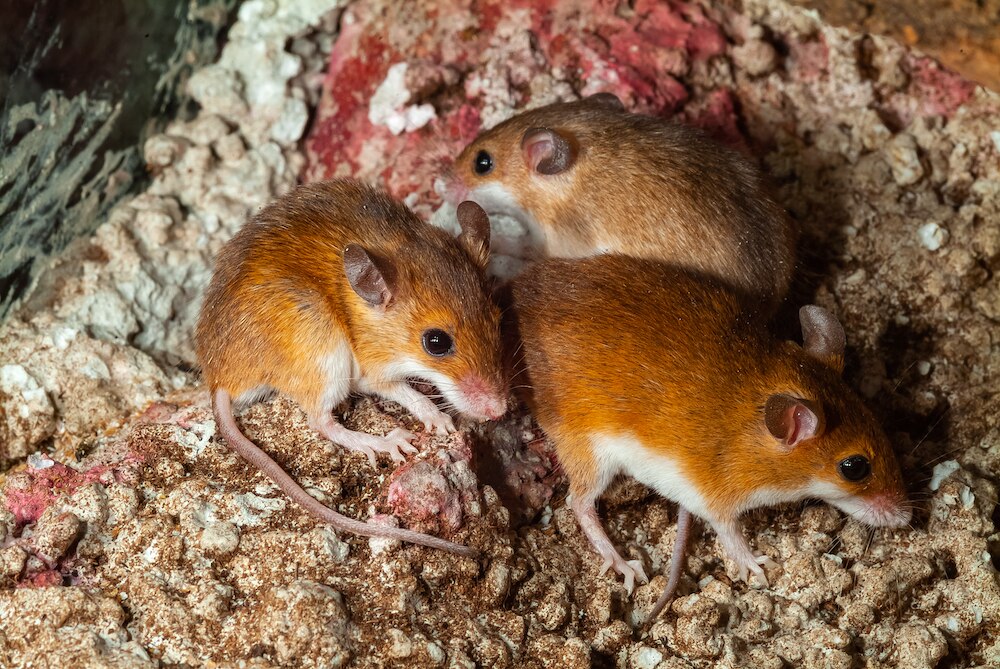Create a free profile to get unlimited access to exclusive videos, sweepstakes, and more!
Mighty mouse! Incredible regenerating mouse self-heals organ damage without scars
We don't know if we should be jealous or terrified.

Spiny mice take their names from a collection of stiff guard hairs permeating their otherwise fluffy exteriors, but that feature is not the defining feature of their skin. The spiny mouse — any species of mouse from the genus Acomys — have the incredible ability to shed their skin and regenerate it.
Their skin is built to tear away like the exterior of a fire-cooked marshmallow in order to prevent predation. A predator on the hunt then finds themselves holding the mouse’s jacket while the animal itself has vanished into the brush.
Losing one’s skin is generally a bad thing, particularly if you’re a mammal and haven’t already built new skin beneath like a reptile or arthropod might. But the spiny mouse is capable of regrowing their skin as if they had never lost it in the first place. This survival strategy is similar to what we see in lizards who abandon their tails when threatened and regrow them. Lizards, however, regrow imperfect tails while spiny mice grow new skin with all of the bits and bobs, hair follicles and sebaceous glands, they’ve always enjoyed.
This regenerative ability has long interested scientists for the way it might teach us how to better heal our own injuries. Uncovering the healing strategies of spiny mice might help us to heal from cuts or burns without the scarring we typically see in those injuries.
New research by Daryl Okamura, from the Center for Developmental Biology & Regenerative Medicine at Seattle Children’s Research Institute, and colleagues demonstrates this regenerative ability is not only skin deep. The results were published in the journal iScience.
Because the skin shedding and regrowing is a defense mechanism there was no reason to believe scarless healing would extend beyond the surface to the vital organs inside, but Okamura’s research indicates that it does. Spiny mice have apparently found a way to heal injuries throughout their bodies perfectly.
In humans, one of the major causes of organ failure is fibrosis (scarring) which occurs as a result of physical trauma or disease. To test the scarring response in the organs of mice, researchers produced two types of injury to the kidneys of spiny mice and those of house mice (Mus musculus), who acted as a control.
The first injury type was unilateral ureteral obstruction (UUO) which obstructs the flow of urine and causes swift fibrosis in mice, mimicking some pathologies seen in humans. The second injury type was completed by clamping the kidney’s vasculature for 40 minutes. In both species, injury was confirmed and observed over the course of the following two weeks.
In the house mice, scarring occurred within the kidney tissues, causing a decline in organ function which ultimately became fatal. In the spiny mouse, however, healing initiated without fibrosis allowing for the restoration of kidney function. By the end of the process, it was as if no injury had occurred.
Precisely how the spiny mouse achieves this incredible regeneration is still under investigation, but researchers did identify 843 genes in six clusters which differ from those of the house mouse and appear to have a role in cell-cycle control and DNA damage response. They also noted a delay in macrophage response. Macrophages play a role in creating scar tissues and their accumulation was not measured until day 7, giving the body time to initiate healing without the introduction of scars.
Instead, gene clusters in surviving cells activated to initiate healing of damaged tissues rapidly, almost as if the body called in reinforcements from the surviving cellular troops to treat the damaged cells and get them back into action.
Research into the healing abilities of spiny mice are ongoing and scientists hope that by better understanding the processes at play, they might be able to develop better treatments in humans. Treatments which could heal exterior wounds, regrow damaged cartilage, and prevent or reverse organ damage.
Or maybe it could also help us shed our skin and slip into the underbrush, should we ever find ourselves under attack by giant predatory aliens.


























